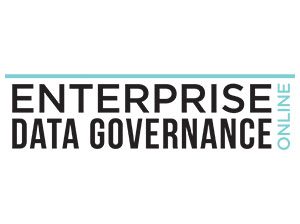
According to Fawad Butt, many companies spend a lot of time and energy building a Data Governance and Data Stewardship Program by putting, policies, procedure, and tools into place, yet, “At the end of the day, the real operationalization work of Data Governance tends to happen through Data Stewards.” To do that well, stewards need training, support, and permission to learn from mistakes.
Fawad Butt is the Chief Data Governance officer at Kaiser Permanente (KP) and recently delivered the Keynote Address for the DATAVERSITY® Enterprise Data Governance Online 2017 Conference. Kaiser’s mission is to “deliver high quality care at the lowest cost,” said Butt, and they put that into practice with a non-profit, vertically integrated health care system, unique in the US because it has an “end-to-end ecosystem.” KP operates hospitals, sells insurance, employs physicians and other health care staff, runs their own pharmacies and labs, and are now building a medical school.
“Unlike typical health insurance companies, we don’t just have health insurance member data, we also have medical records because we deliver care,” he said. “We also have pharmacy data because we operate our own pharmacies,” and clinical data related to labs – all of which is the context for KP’s data collection.
Understand the Environment
To develop a truly strategic Data Stewardship approach he said, start by understanding the core datasets and domains that you want to govern, because “There is a pretty simple alignment between the governance domains and the stewards that help do that work.”
It’s also important to understand what the major business units are, “Perhaps there’s an opportunity to also align with business units because there’s a lot of traction that can begin in terms of doing that.” He also suggested looking for places or programs where transformation is occurring or is about to occur because, “That creates a real alignment opportunity.” When processes are already in a disrupted state, it’s possible to align some Data Stewardship resources to those programs as well. “I’ve seen some real benefit and acceleration in deployment.”
Dimensions in Data Stewardship
He introduced the concept of horizontal and vertical dimensions in Stewardship. He said that historically, Data Stewards started out by being aligned with datasets: “There might be a Customer Steward responsible for supporting all the data relating to customers. There might be a Worker Steward assigned to how various account data is managed, or location data or reference data,” he said. Those are positions he considers vertically aligned. “The other way to look at stewardship,” he said. “Is through what I call horizontal components.”
“Finance might be one of those. Finance is a very specific function, but finance both produces and consumes data that goes across various data sets. So finance in this scenario probably needs to have some consumption of customer data, they will probably will have some impact on the account data, they will definitely track and manage, and in some cases, create transactional data, and they may consume, or create, or leverage some reference data as well.”
KP aligns Data Stewards in both dimensions, and he sees that as the optimal situation:
“To me its not a question of either/or. The real magic at the end of the day happens when we have both a vertical and a horizontal Data Stewardship Model in place, because the vertical stewards tend to understand the data deeply across business units, but then the horizontal stewards come in and provide that context, and those stewards are not assigned to a dataset, they’re assigned to a set of business processes and all the data that support those business processes.”
Data Stewards: Full-time or Part-time?
“Is stewardship a full-time role? Is this something we can just add to somebody’s existing job?” He said that it’s important to consider your localized construct when making that decision. “If you’re setting up Data Governance and Data Stewardship for the first time, you definitely need to have some dedicated resources,” because of the difficulty in training stewards who are focused on other full-time work, he said.
“If it is within your control, or if you’re building a business case for the first time, my recommendation would be to spend the time and the energy to explain why it’s necessary, at least in the initial phases, to have dedicated resources.” He added, “That doesn’t mean that there can’t be part-time roles. There are evangelist roles that can be very valuable to the Data Stewardship Model.”
He stressed that there is often a dynamic tension when there’s not enough funding or resources available to provide coverage to all key functional areas.
“Sometimes you see the pivot from full-time to part-time resources, but I can also tell you that in my personal experience, there are a number of organizations when that pivot does occur, there are impacts in terms of the deliverables and the delivery of Stewardship and Governance. It gets impacted negatively in most cases”
Data Steward Skills
He said there are three dimensions that must be present for a Data Steward to be successful:
- A background in data
- Leadership and influence capacity
- The ability to execute
He remarked that the experience can be almost anywhere across the organization, but “they must have some understanding of data that they can bring to the table. Otherwise, it will just be too difficult for them to get people to give them the authority and assign the right level of commitment to them,” Without a background in data, he said, “It’s a credibility issue.”
Leadership is a critical skill to have and in some cases, “That’s the harder one to find.”
Communication and problem-solving skills are essential, because, “There is never going to be enough authority assigned to stewards,” he said. “They’re going to have to leverage all the mechanisms that people can and do in leadership to influence outcomes.”
Being able to deliver is the third requirement, you can have stewards with a great data background, who can influence people. “But if they can’t deliver – if they can’t take a complex thing such as a data domain and break it down into manageable chunks and then be able to execute against that – that tends to be a challenge.”
Success is possible if two of the three skill sets are present if proper training and support are given to build up the area where the steward’s skills are weak, he said. “Whether the resources have this in place or you want to train them, these are the three kinds of skill sets that come together to make good stewards.”
Data Steward Training
Within a large organization like KP, operating in eight different regions, each with different processes and technologies, he said it’s important to set stewards up for success. To that end, KP developed a Data Governance and Stewardship Playbook to provide some standard methodology, “So we’ve spent a lot of time in building a robust one.” One of the key tools used is a Maturity Model that stewards are required to take their domains through, providing a way to compare domains against each other and document progress over time. H remarked, “It also makes it simpler to communicate some of the progress to executive leadership, especially at the board and CEO level, so I think that’s very helpful.”
The detailed Playbook comprises over 100 pages of information, guidance, and templates for stewards, he said. Included features are a definition of the Data Governance process itself, information about the organization and culture, and educational materials on effective Change Management. In addition to the resources in the Playbook, Data Stewards are required to complete a Change Management Training Program developed in-house that spans two and a half days, he said.
“We believe that the work overall has a significant component of Change Management, so we explain how you do stakeholder analysis, how you asses what the change means to some of these stakeholders, what we anticipate their reaction to be, [and] what is the best method of communication.”
“Last but not least,” he said, most organizations have had some experience trying to do something new with Data Management, and “I can bet you that every organization has had at least one failure to report on, if not more than that.” Instead of running away from those failures, he said, “I want to go find out what happened.” Within the Data Governance space at KP, they’ve taken time to document previous attempts and share those lessons with the Data Stewards working to help develop the Data Stewardship program. “Teaching stewards not only what their role is and how to do it, but also what happened in the past and why people failed – I think goes a really long way.”
Check out Enterprise Data Governance Online at www.datagovernanceonline.com/

Here is the video of the Enterprise Data Governance Online 2017 Presentation:
Photo Credit: Anson0618/Shutterstock.com
